 by our College Data Analytics Team
by our College Data Analytics TeamStrayer University - New Jersey total enrollment is approximately 995 students. 66 are undergraduates and 18 are graduate students.
Male/Female Breakdown of Undergraduates
The full-time Strayer University - New Jersey undergraduate population is made up of 62% women, and 38% men.
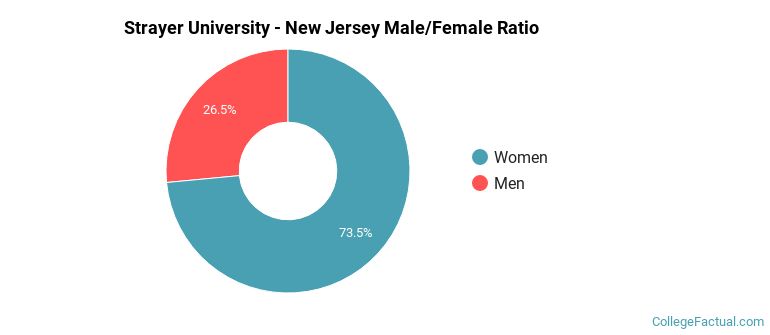
For the gender breakdown for all students, go here.
Strayer University - New Jersey Racial/Ethnic Breakdown of Undergraduates
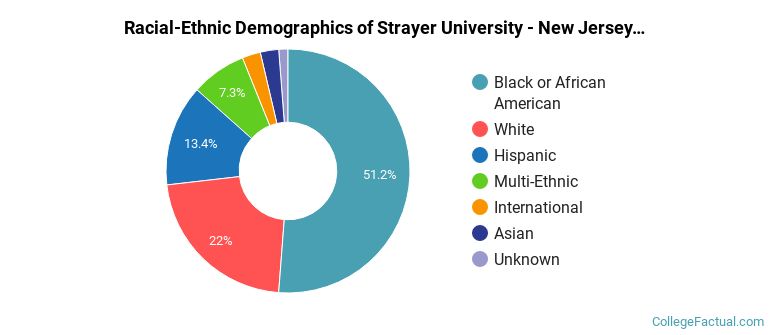
| Race/Ethnicity | Number |
|---|---|
| Black or African American | 26 |
| White | 20 |
| Hispanic | 10 |
| Multi-Ethnic | 5 |
| Asian | 2 |
| International | 2 |
| Unknown | 1 |
| Native Hawaiian or Pacific Islander | 0 |
See racial/ethnic breakdown for all students.
Male/Female Breakdown of Graduate Students
About 44% of full-time grad students are women, and 56% men.
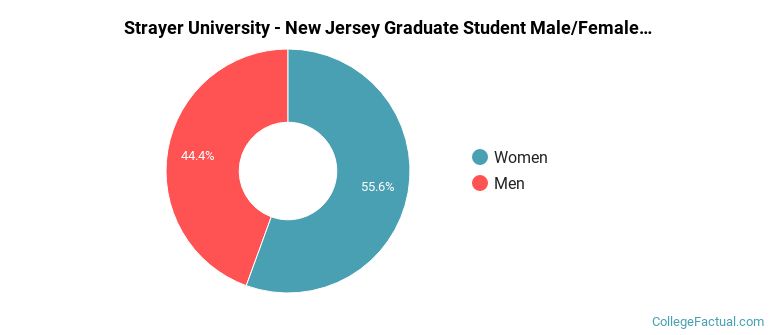
For the gender breakdown for all students, go here.
Strayer University - New Jersey Racial-Ethnic Breakdown of Graduate Students
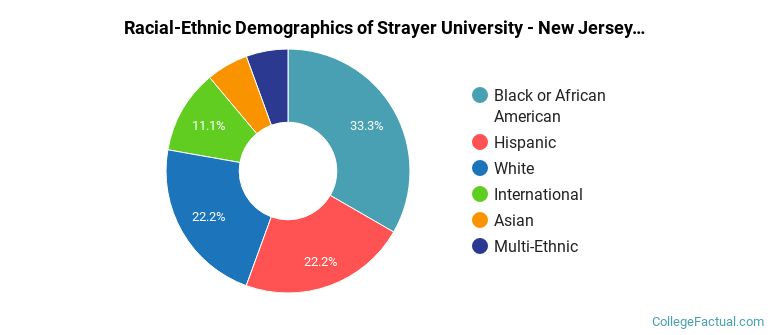
| Race/Ethnicity | Number |
|---|---|
| Black or African American | 8 |
| White | 4 |
| International | 3 |
| Asian | 2 |
| Hispanic | 1 |
| Native Hawaiian or Pacific Islander | 0 |
| Multi-Ethnic | 0 |
| Unknown | 0 |
See racial/ethnic breakdown for all students.
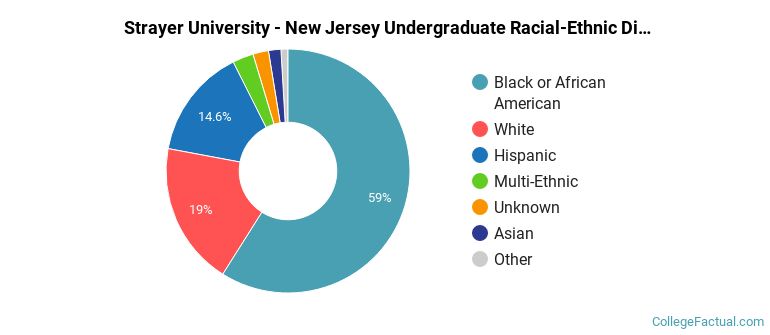
| Race/Ethnicity | Number |
|---|---|
| Black or African American | 559 |
| White | 190 |
| Hispanic | 157 |
| Multi-Ethnic | 35 |
| Asian | 22 |
| Unknown | 19 |
| International | 5 |
| Native Hawaiian or Pacific Islander | 4 |
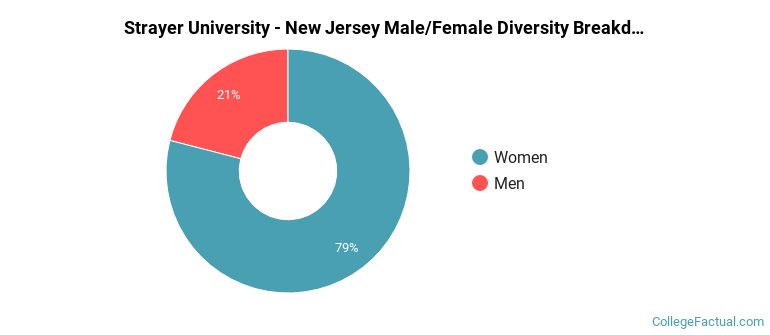
There are approximately 781 female students and 214 male students at Strayer University - New Jersey.
Strayer University - New Jersey ranks 1,936 out of 2,183 when it comes to geographic diversity.
1.69% of Strayer University - New Jersey students come from out of state, and 0% come from out of the country.
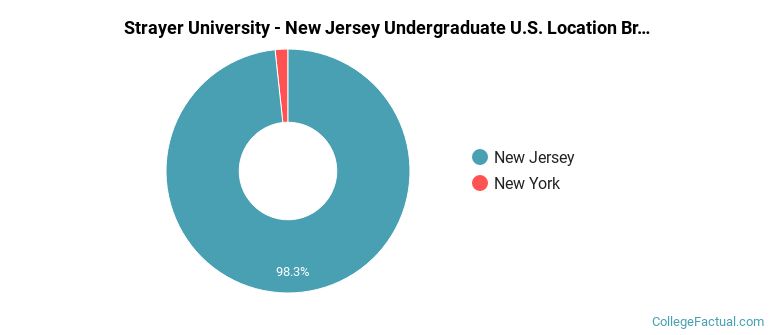
The undergraduate student body is split among 2 states (may include Washington D.C.). Click on the map for more detail.
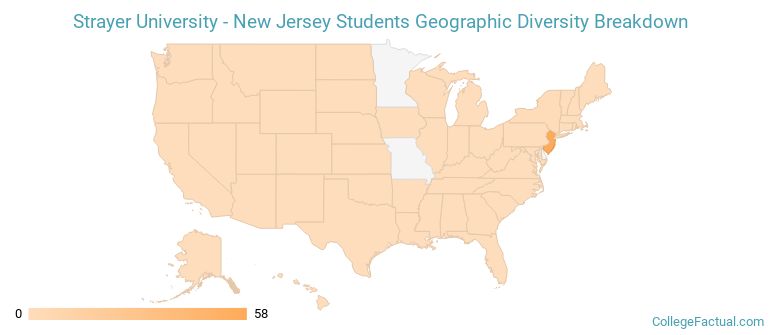
| State | Amount |
|---|---|
| New Jersey | 58 |
| New York | 1 |
| Alaska | 0 |
| Alabama | 0 |
| Arkansas | 0 |
Learn more about international students at Strayer University - New Jersey.
A traditional college student is defined as being between the ages of 18-21. At Strayer University - New Jersey, 4.20% of students fall into that category, compared to the national average of 60%.
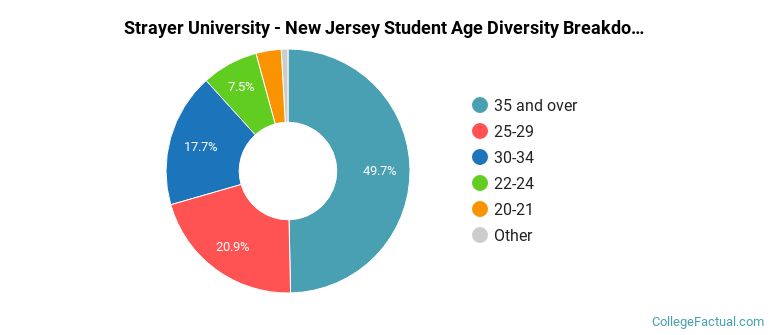
| Student Age Group | Amount |
|---|---|
| 35 and over | 445 |
| 25-29 | 187 |
| 30-34 | 159 |
| 22-24 | 67 |
| 20-21 | 30 |
| 18-19 | 8 |
| Under 18 | 0 |
Footnotes
*The racial-ethnic minorities count is calculated by taking the total number of students and subtracting white students, international students, and students whose race/ethnicity was unknown. This number is then divided by the total number of students at the school to obtain the racial-ethnic minorities percentage.
References
Department of Homeland Security Citizenship and Immigration Services
Find out how College Factual created their Diversity Rankings.